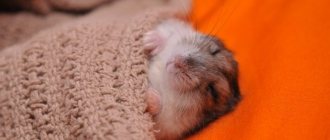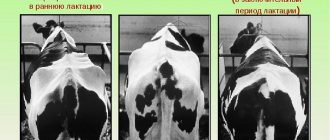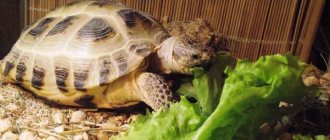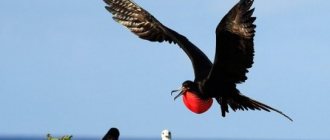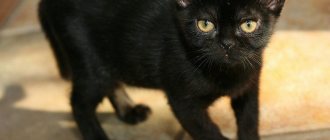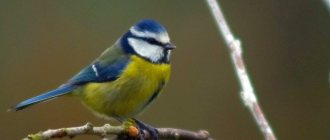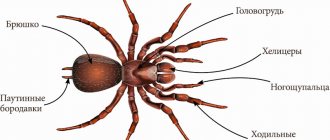An unusual creature came into the field of view of our site - a haymaker. Their common name is kosinozhki, or koselapki. All because of the unusual structure of the limbs. These are representatives of arachnids, and according to zoologists, there are about 6,650 species of them in the wild. Harvesters are very common animals, but few articles have been written about them; their appearance and behavior make them invisible in everyday human life.
Let's try to fill this gap by presenting you with some interesting facts about haymakers, and also show you many photos of them and even an amazing video.
Appearance and structure
The photograph shows a representative of a detachment of haymakers. They feed on plant nipples, soil nematodes, small arthropods, and yeast fungi. We will tell you more about this below.
Representatives of the arachnid class are very similar to spiders. But it all ends with external similarities. Harvesters have a segmented body structure. The abdomen is connected to the cephalothorax by a wide base. In a spider, such a connection is thin.
The body is small and covered with a protective shell. Adults do not grow more than 2–5 mm (torso), but the legs can reach 16 mm. There are large harvesters, the body length of which reaches 22 mm.
On the front of the head there is a pair of simple eyes, and they feel objects with their largest limb. Their internal structure is like that of all arachnids. Glands are located along the edges of the abdomen. In moments of danger, they emit an unpleasant odor, scaring away enemies.
By the way, on our website most-beauty.ru there is an interesting article about the TOP 20 most beautiful spiders in the world.
Mythbusting
There is such a program - “MythBusters” with Jamie Hyneman and Adam Savage, they tested the statement about whether the bite of a haymaker spider is poisonous to humans.
The tests were carried out on Savage's hand, after which Adam said that he did not feel anything other than a slight burning sensation. Having further studied the composition of the poison, the researchers found that centipedes are less dangerous than, for example, the notorious “black widow”.
These creatures most likely do not have enough physical muscle strength and technical ability to bite a person, poisoning him. In addition, the venom of the harvest spider is fatal only to its prey; the bite does not cause harm to humans. This conclusion was reached by scientists who conducted tests in laboratory conditions, injecting poison into animals and studying their reaction.
In practice, not a single case has yet been registered in which a spider has bitten a person with dire consequences. Therefore, so far any claim that their poison is especially dangerous for you and me has not been proven.
But brown recluse spiders are poisonous creatures and are capable of biting people, and similar cases have been recorded.
However, scientists will likely continue their research and study of harvestmen.
Special Features
If you grab a haymaker's leg, it will easily come off. For a few more minutes, the severed limb will make convulsive movements.
The ease with which the limb comes off creates the misleading impression that the legs are loosely attached to the body. In fact, this is not true. The harvester deliberately separates the limb. The paw comes off like a lizard's tail. This autotomy helps the haymakers to escape from enemies.
The predator first stumbles upon the paws, and then is distracted by the moving limb while the animal flees. Therefore, you can often find individuals who have an incomplete number of legs.
Appearance description
The centipede spider, which lives in our area, reaches a body size of 2-10 mm. The largest representative has an abdomen of 22 mm. The length of the legs is comparable to the dimensions of the body or several times longer. The most common spider, the pigtail spider, has legs that are 20 times longer than the body - up to 16 cm.
Unlike other types of spiders, the abdomen and thorax are connected by a wide bridge, practically merging together. Whereas many spiders have a thin “waist”. The body is in most cases oval in shape. When the soil is very hot, the long surfaces lift the body high to avoid overheating.
On a note!
The color is the most varied. Nocturnal harvestmen are black, gray, brown, and red. The daytime braid has brighter colors - orange, red, with patterns and spots. The centipede spider found in the house is gray-brown in color with almost transparent limbs.
The spider has 6-8 eyes on its head, but the animal sees very poorly. The organs of touch and smell are located on the legs. This is the main organ connecting the harvester with the outside world. The long-legged spider senses the slightest air vibrations, vibrations, and odors. You can carefully examine the structural features of the arthropod in the photo of the harvest spider located below.
Harvesting spider
Settlement area
It's time to find out where these amazing creatures live. Haymakers settled almost everywhere, occupying various natural landscapes.
The main species have chosen forests and meadows. They are found in mountain ranges, settling in rock crevices and caves. Some species have easily adapted to living conditions in cities, and therefore can be found in apartments, houses, and office premises.
Behavior in the wild and in a private home
The web of Pholcidae is not sticky; insects are held in it due to its irregular structure. Having discovered prey in the nets, the arachnid quickly wraps it in threads and inflicts a poisonous bite. If the predator is hungry, it eats the prey immediately; if it is full, it leaves it for later. After eating, the arthropod cleans the nets by unhooking and releasing the prey.
Some representatives have an interesting feature: when threatened, they begin to react with rapid vibrations of rotational movement in the web. Perhaps in this way representatives of the araneomorphs give a signal for the intended rival to leave.
The spider on thin long legs that lives in the apartment is quite cowardly. If chased, he will retreat into a corner or fall out of his web and run away.
Lifestyle
Most species are nocturnal predators. During the day they freeze in secluded places. Pets are hiding in the corners. Sometimes they can be seen frozen on the walls. A timid animal that immediately tries to hide when encountered.
Like all predators, they feed on animal food. The diet includes caterpillars, ants, mosquitoes, and various beetles. There are species that easily cope with snails. Some moss moths eat mushrooms, moss and other plant foods.
The structure of the oral apparatus allows it to absorb solid particles of prey. Food is crushed by pidipalps, which act as jaws.
Is it dangerous for humans?
This type of spider is not dangerous to humans, due to its inability to damage human skin with its weak jaws. Even if insect venom gets on the mucous membrane or in an open wound, its concentration will not be enough to cause harm.
Many people are terrified of spiders and even a simple “watch” can instill fear in them. In this case, you just need to remove these uninvited guests from your home.
Reproduction
The process of reproduction brings them closer to insects. The mating season begins in August. Males fight fiercely for the female. During mating, internal fertilization occurs.
The female lays eggs in a special nest in the soil. There are up to 500 eggs in one clutch. Under favorable conditions, the female can lay eggs 2–3 times.
In some males, after mating, the maternal instinct awakens. They jealously guard their offspring, since an indiscriminate female can eat her own clutch. The harvester lives for 2 years, but there are species that have a one-year life cycle.
Peculiarities
Haymakers do not have leg extensor muscles. Lifting of the body and movement occurs according to the hydraulic principle. The legs are hollow inside. They contain a liquid medium (hemolymph), which replaces blood to a certain extent. By building up pressure, the haymaker straightens his legs.
There are a pair of holes on the sides of the cephalothorax. These are the exits of the odorous glands. Their harvesters can use them in case of danger. The contents with a pungent vinegar smell shoot out at a distance and scare away predators. Therefore, the braids have almost no special enemies.
The mating season of harvestmen usually occurs at the end of summer. The male, having met a female along the way, mates and, without stopping, is poisoned further. Occasionally, haymakers fight for girlfriends. In some species, males participate in caring for future offspring. While protecting the clutch, they are sometimes forced to drive away the females, since they can eat everything.
There are usually up to 50 eggs in a cocoon. During the season, female harvesters manage to lay several clutches with a break of up to three weeks. The substrate for this is chosen among the foliage; moss and loose soil can be used.
Classification
Systematics divides these creatures into four main suborders.
Cyphophthalmi
A small suborder containing about 220 genera. These are primitive harvesters, whose fossil remains are found by paleontologists in Carboniferous deposits.
Representatives of this suborder have an oval oblong body, no more than 2 mm long. The legs are short. They live in the tropics and subtropical regions of Africa, South America and Eurasia.
The suborder includes two large families - Sironidae and Stylocellidae.
Eupnoi
This suborder includes the pigtails with the longest limbs. They have large eyes, a soft belly and special vitality.
They easily tolerate cold, being active until the first frost. Due to their special frost resistance, they settled throughout the planet. They are found on mountain slopes, deciduous and coniferous forests.
The suborder has 1,800 species, united in two families - Phalangiidae and Caddidae.
Dyspnoi
The most ancient representative of this suborder, Ameticos scolos, was discovered in coal deposits in France. Now it includes 320 modern species.
Very motionless species that sometimes seem lifeless. They live in the southern regions of Russia, in the vast expanses of Europe and Southeast Asia.
The legs are short. There are species that have an elastic abdomen, but there are also armored coverings. The suborder includes four families - Ischyropsalidae, Nemastomatidae, Trogulidae, Dicranolasmatidae.
Laniatores
The most numerous tropical suborder. Includes more than 4 thousand species. It is also the most mysterious, as it is the least studied.
Representatives of the suborder have a brightly colored body with a very hard protective covering. The abdomen is characterized by small bumpy growths. The settlement area is extensive. Found in the tropics of Africa, South America, and Australia.
A large population lives in India. The largest suborder includes five families - Cosmetidae, Gonyleptidae, Triaenonychidae, Oncopodidae, Phalangodidae.
Bibliography
- Marusik Yu.M., Kovblyuk N.M. Spiders of Siberia and the Russian Far East. M: Association of scientific publications MKM, 2011. p. 213
- Life of animals. In 7 t./Ch. ed. V.E. Sokolov. T. 3 Arthropods: trilobites, chelicerates, tracheal breathing. – 2nd ed., revised. – M.: Education, 1984, p. 68
- Seifulina R.R., Kartsev V.M. Spiders of central Russia: Atlas-identifier. – M.: ZAO “Fiton+”, 2011, p. 222
- https://beetlestop.ru/pauk-senokosets/
- https://en.wikipedia.org/wiki/List_of_Pholcidae_species
- https://araneae.nmbe.ch/data/1294
Did you like the article? Share with your friends:
Kinds
Now let’s look at certain types of extraordinary inhabitants of our planet.
Common harvestman / Phalangium opilio
Females and males of this species differ in size, body structure, and color. Males grow from 4 to 5 mm, females are larger - 6–7 mm. On the upper part of the female's body there is a saddle-shaped dark spot.
Both sexes have long legs. The second pair of limbs is the longest. Males have bumpy growths on their bodies that females do not have.
They live in Eurasia and North America. They feed mainly on small insects, but are not averse to eating plant foods.
Opilio parietinus
In the photo, an inhabitant of forests and meadows of the Eurasian continent and North America. Belongs to the Phalangodidae family.
The oblong body reaches a length of 5–7 mm in adults. The female is slightly larger than the male. They have long legs with dark spots on them.
It feeds on caterpillars and beetles. Houses eat mosquitoes and flies. Adapted to life in residential and commercial premises. But now it is actively being replaced by other invasive apartment dwellers.
Opilio canestrinii
The historical homeland of this species is southern Italy. From these territories, it began to spread throughout Europe, adapting to live in a cooler climate.
Females grow up to 8 mm, males - no more than 6 mm. The tarsi in both sexes reach 16–17 mm. Spreading throughout Central Europe, it began to displace the representatives of Opilio parietinus familiar to these places.
They can often be seen on tree trunks and house walls. The species was discovered in 1876 by Swedish zoologist Tamerlan Thorell.
Pettalidae
A separate family of the suborder Cyphophthalmi includes about 75 species. They spread throughout the tropical forests of South America and are found in Australia, Africa, and the islands of Madagascar and Sri Lanka.
Very small. They grow no more than 2 mm. The legs are short. This, according to most-beauty.ru, makes them look like ticks. The color is dark brown, sometimes yellow. They feed on insects and plant foods.
Almost all species prefer to live in fallen leaves. Only in South Africa are they found in caves. Cave dwellers have no eyes. The new family was introduced into the world classification by the French scientist Eugene Simon in 1879.
Ischyropsalis helwigi
The range of this species is limited to European countries. Lives in deciduous forests, but can move to megacities. In cities they settle in orchards and parks.
Quite large harvesters. The body length reaches 7 mm, but the legs can grow up to 1 cm. In times of danger, it moves quickly or freezes, pretending to be dead.
It is a specialist in eating slugs and snails. Thus, it brings benefits by preserving the fruits of trees from dangerous pests.
How to get rid of long-legged spiders in an apartment?
Haymaking spiders are harmless to humans. They destroy mosquitoes, midges, ants and flies in the house. But not everyone can tolerate these arthropods. There are people who suffer from arachnophobia (fear of spiders). To prevent spiders from taking up residence in the house, you need to fight them. There are mechanical, chemical and physical ways to control hay spiders.
Mechanical methods
- Seal all even the smallest cracks through which a spider could enter the house. Cover the ventilation holes with a mosquito net.
- Sweep or vacuum all corners and hidden places behind cabinets and beds every day.
- Carry out wet cleaning more often.
Chemical methods
- Long-legged spiders cannot tolerate strong odors. Therefore, you can place strong-smelling substances and herbs on the windowsills and corners of the house: mint, orange peels, hazelnuts, chestnuts. Spray with eucalyptus or tea tree oil.
- Plant a garden of aromatic plants in your home: lemon or other citrus fruits, coffee tree, geranium.
- Sprinkle diatomite, a natural substance crushed into powder, in the corners and along the perimeter of the baseboard. After contact with it, spiders die.
- Treat the room with chemicals such as Raid, Joker Bun, Bros, Raptor and others.
Physical methods
- Increase the humidity level in the room.
- Change the lighting around the house so that the light is not white, but yellow. Sodium flashlights can be used. Such light does not attract insects, which means it deprives spiders of their food supply.
Photo credit: Sublimat, CC BY-SA 3.0
Interesting Facts
- After DNA research, biologists found that these creatures are closer not to spiders, but to scorpions.
- Losing a limb is not fatal and does not affect lifestyle. This protective function helps the animal hide from natural enemies. Lost paws cannot be restored.
- Cave species completely lack visual organs, and they perceive their habitat with the help of pedipalps.
- This is an example of parallel evolution. During evolutionary development, they easily adapted to life on land, and in their lifestyle and structure they are more reminiscent of insects.
- They lack flexion-extension muscles in their limbs. They move hydraulically. The legs have hooks that allow you to stay on a smooth surface.
- In the Middle Ages they were called “shepherd spiders.” In England they are called “reapers”, “harvesters”, but in Latin America the popular names are associated with the unpleasant odors emitted by haymakers.
- They are not poisonous and do not bite, but are afraid of them because of their resemblance to spiders. This similarity only harms them. People are trying to get rid of their neighbors in the house. But the benefits from them are great.
Don’t miss the fascinating article most-beauty.ru on our website about the TOP 10 most poisonous scorpions on the planet.
What does the harvest spider eat?
Photo: Dangerous harvest spider
The basis of its menu is insects.
Among them:
- beetles;
- ants;
- flies;
- mites;
- midges;
- mosquitoes;
- aphid.
They very effectively exterminate living creatures that enter the apartment and prevent them from multiplying - this is why they are very useful. But there is also an obvious disadvantage of their presence in the house - the network. In harvest spiders they are very extensive and therefore very noticeable. One spider can entangle an entire corner, and then move on to the next one. Often their networks are located near the ceiling.
The net is not sticky, the whole hope is that the prey caught in it will become entangled, and this will give the spider time to attack it. He usually goes hunting after sunset. As soon as the victim is in the net, he approaches and further entangles her, using his long paws.
When she can neither dodge nor attack in response, the harvest spider bites her, injecting poison - it does not pose any danger to humans. When the victim dies, a digestive enzyme is injected into it, after which its tissue becomes a soft pulp, which it absorbs.
And the spider is also able to eat the remaining solid particles of the prey’s body: it tears them off with the help of chelicerae, and then crushes them with processes on the front legs and also eats them. If there is something left after the meal, he takes the food away and stores it for future use - after all, it doesn’t happen from day to day, sometimes no one gets caught in his net for a long time.
A hungry spider sometimes even begins to rush at prey that just happens to be close to the web, but is not entangled in it - in these cases, the hunt can be dangerous for itself, because sometimes the prey can be stronger and more dexterous than itself.
Often you have to go hungry in winter, because there are much fewer living creatures. Then the harvestmen begin to feed on other spiders, including fellow spiders or their eggs. Hunting for other spiders is carried out differently: the harvest spider tugs at their webs to lure them out, and then pounces. Of course, this is dangerous: the outcome of the fight may be different.
Interesting fact: If the prey is too large to be caught in the net, the harvest spider shakes the net so that it is clearly visible so that potential prey can avoid it. And even if she has already been caught, but still remains too dangerous, he can bite some of the threads himself so that she can escape.
origin of name
An insect with long legs, similar to a spider, has several names.
- The arthropod's paws are easily torn off, and the damaged area quickly heals without causing harm. The leg continues for some time to make movements that resemble a scythe during haymaking. This is where the name comes from: goat's leg, haymaker, spider's leg, goat's leg. The paw attracts the enemy's attention while the spider runs away. Natural enemies are other arachnids and birds.
- The Latin name opiliones literally means "shepherd". The associations arose due to the long legs resembling stilts. In ancient times, shepherds often used stilts to make it easier to keep track of their flock.
- An American writer named the spider opiliones due to its massive distribution in pastures.
A tick is also called a haymaker, which has nothing in common with an arachnid. According to genetic studies, the pigtail's DNA is more similar to scorpions than to spiders.
Lifestyle, habitats
A spider with long thin legs is ubiquitous. It is found in forests, meadows, fields, near rivers, in outbuildings, abandoned buildings, and residential buildings. Some species live in deserts and mountains.
During the day, the koshisena spider hides in shady places away from direct sunlight. Often found on the walls of a building with its legs splayed to the side.
On a note!
At the sight of an enemy, the haymaker flees and develops a fairly high speed. During the day, the house spider sits in a shaded place - in the corners of the room, in the bathroom, pantry, under furniture. At night it goes out in search of food.


